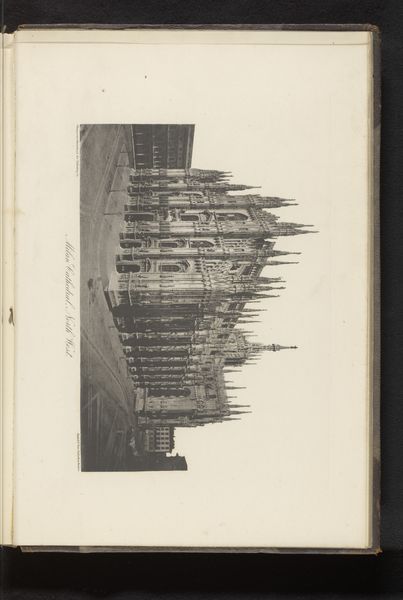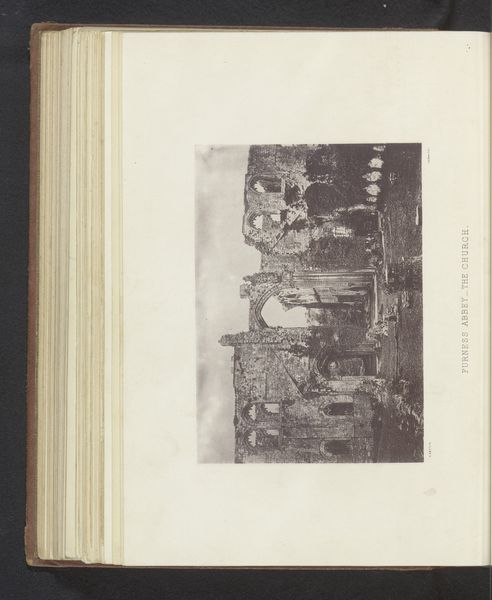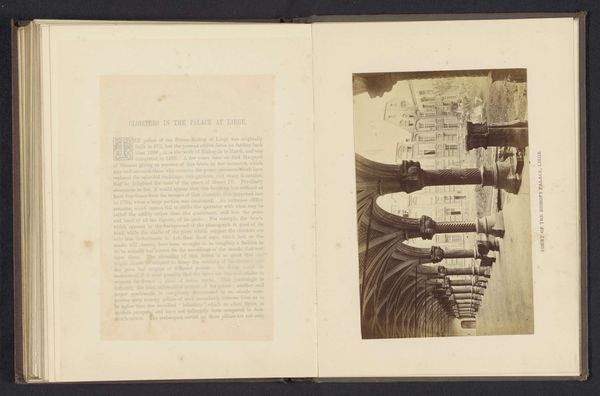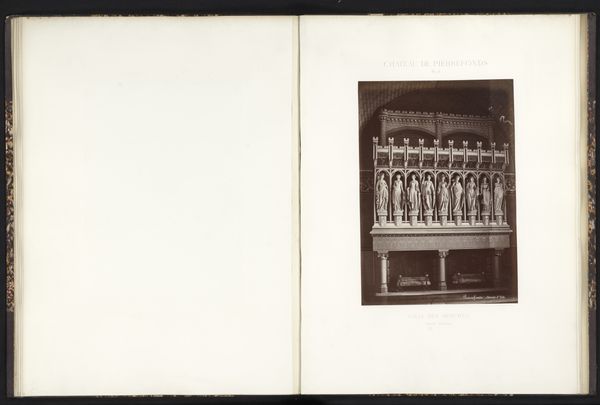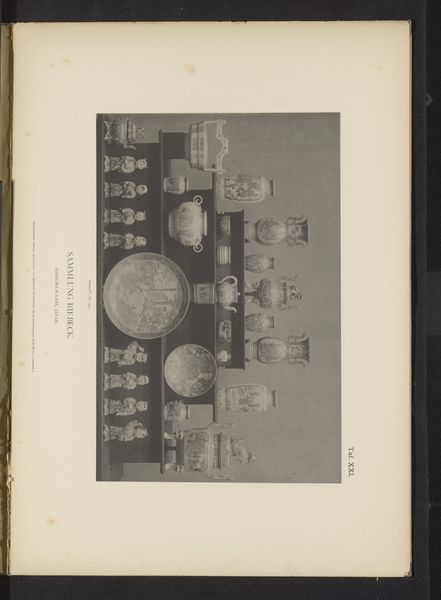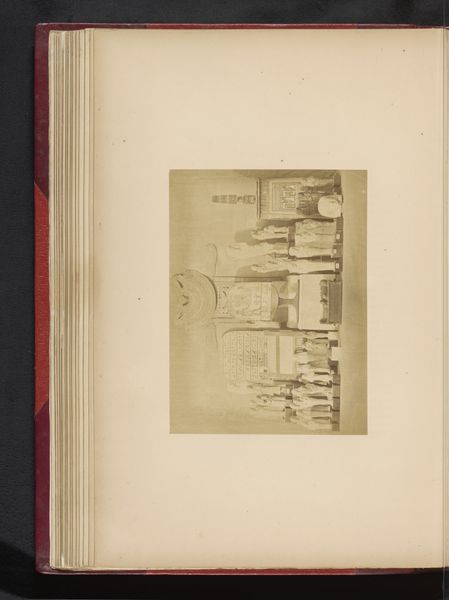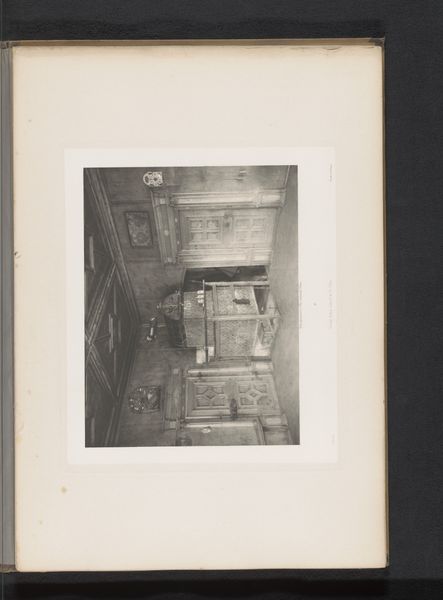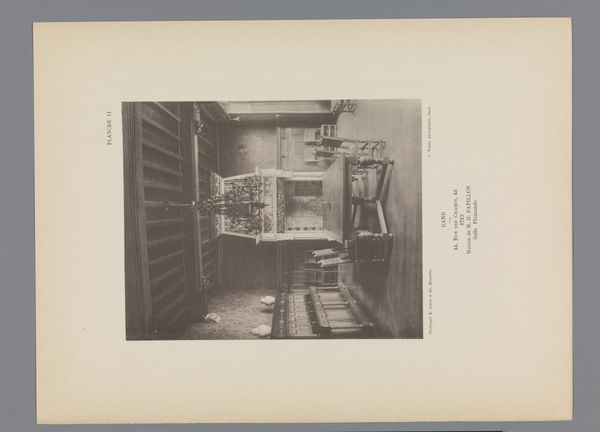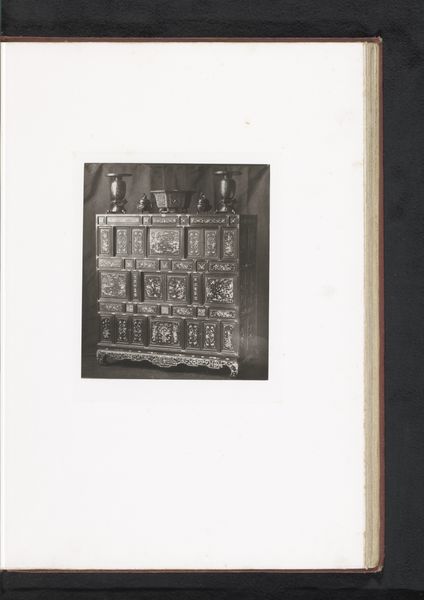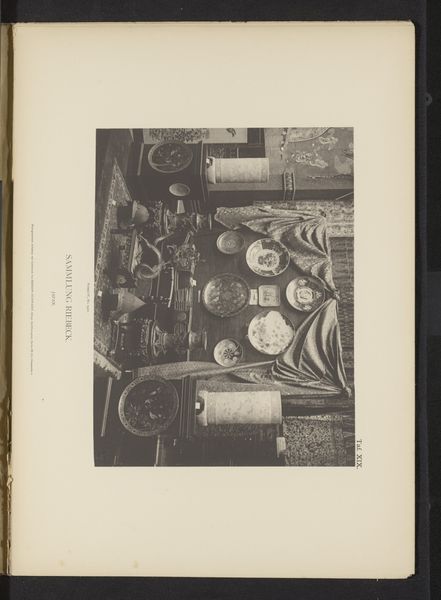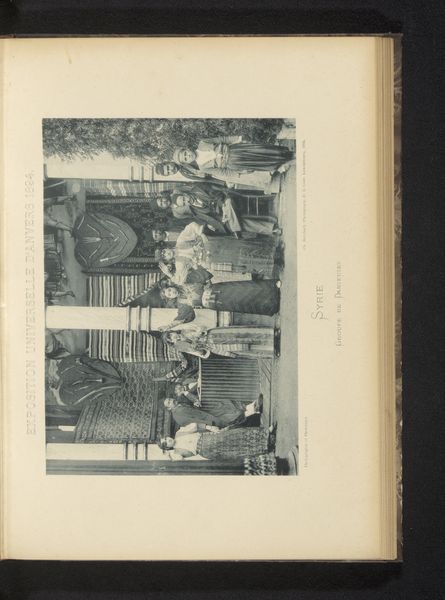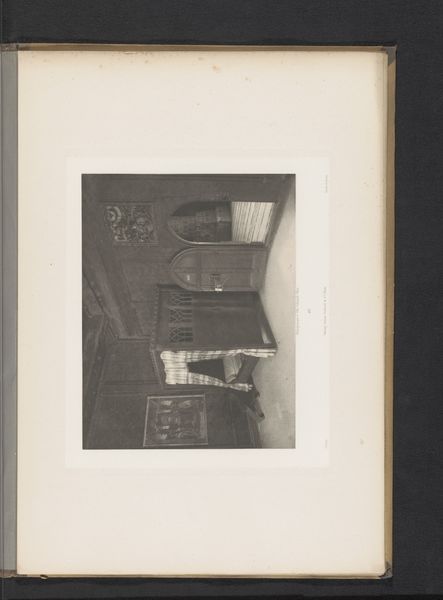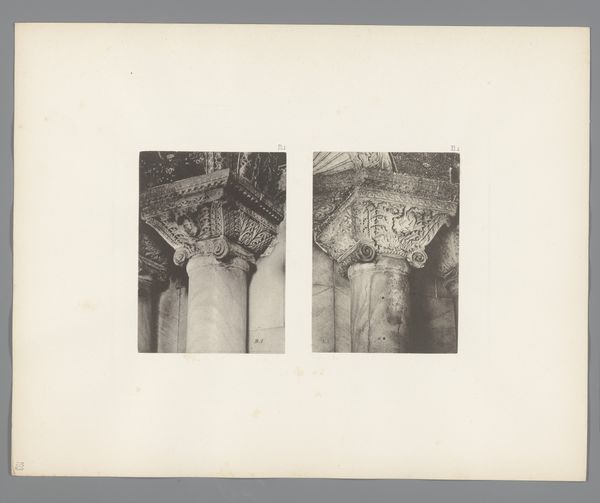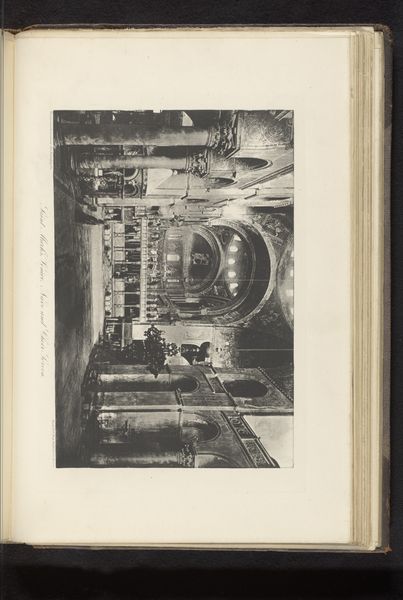
print, photography
#
medieval
# print
#
landscape
#
photography
#
romanesque
Dimensions: height 125 mm, width 175 mm
Copyright: Rijks Museum: Open Domain
Editor: We're looking at a photograph, "Sedilia in de ruïne van Furness Abbey," created before 1880 by Alfred Pettitt. The somber sepia tones evoke a sense of ancient grandeur, almost like a decaying stage set. The meticulous details of the ruined sedilia, highlighted by the stark contrast of light and shadow, convey the weight of history and the inevitable march of time. What formal qualities strike you the most when viewing this photograph? Curator: It is crucial to note how the interplay of light and shadow articulates the architectural forms within the composition. Observe the way light falls unevenly across the stonework, accentuating its texture and surface degradation. The photographer has consciously employed tonal contrast to emphasize the sedilia's ornate detailing. The horizontal orientation accentuates the ruin's longitudinal presence and the relentless progression of time. We can observe the relationship between void and solid in the structuring of space, what effect does this choice provoke for you? Editor: The heavy ornamentation set against such large, empty spaces feels very deliberate and austere, like an acknowledgement of human attempts at magnificence against a greater expanse. How does this structure adhere to the known conventions of either medieval or Romanesque forms? Curator: Pettitt masterfully composes this scene using elements directly inspired by Romanesque forms, such as the rounded arches, substantial stone construction, and decorative carvings that embody the aesthetics and conventions typical of Romanesque architecture. However, the photographer's manipulation of light to create atmospheric effects is quite telling of how such spaces could generate diverse emotional registers that surpass straightforward, descriptive landscape art. I would also propose to observe the use of texture here. Editor: This makes a lot of sense; focusing on these visual choices changes the tone for me quite significantly, beyond a sense of straightforward melancholy! Thank you. Curator: Indeed. Understanding the photograph’s formal elements offers a lens to examine not only historical depiction but also nuanced commentary.
Comments
No comments
Be the first to comment and join the conversation on the ultimate creative platform.
